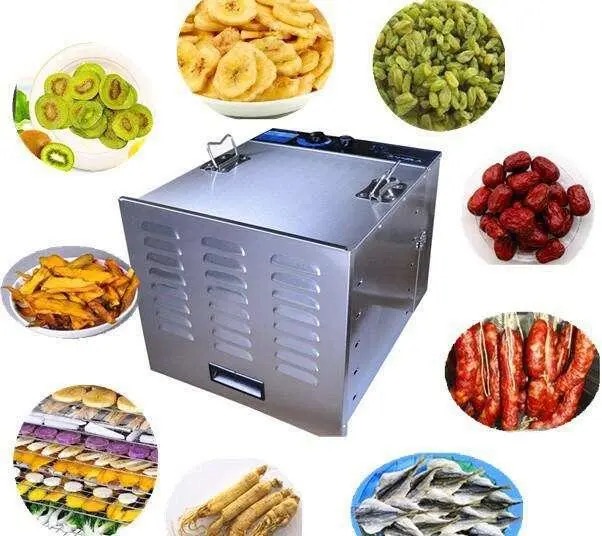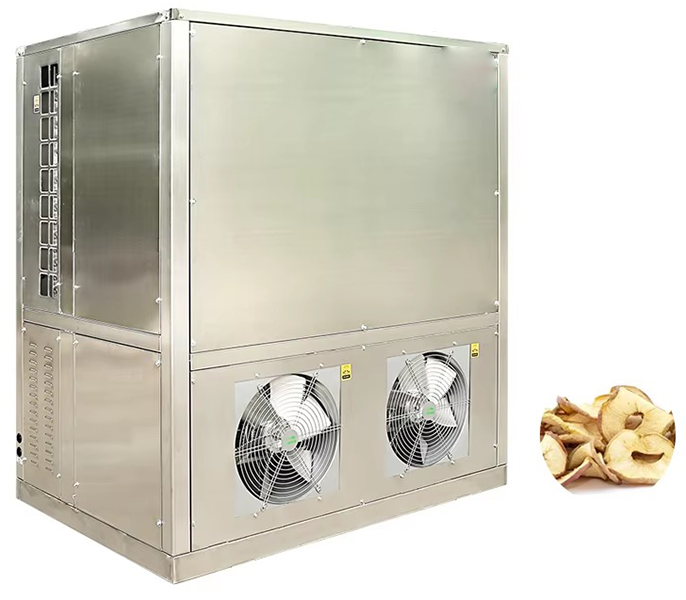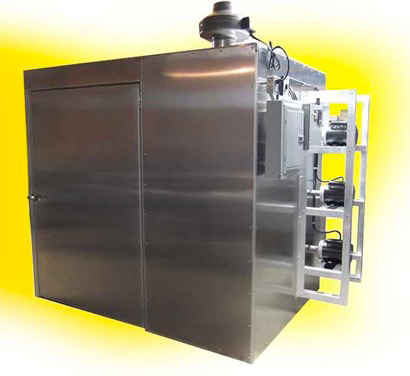
Content Menu
● Understanding Compact Heat Pump Dryers
● Key Advantages of Compact Heat Pump Dryers
● Applications of Compact Heat Pump Dryers in Food Processing
● How Compact Heat Pump Dryers Work
● Benefits Beyond Drying
● Considerations When Choosing a Compact Heat Pump Dryer
● Conclusion
● FAQ
>> 1. What types of foods can be dried using a compact heat pump dryer?
>> 2. How does a compact heat pump dryer differ from traditional dehydrators?
>> 3. Are compact heat pump dryers suitable for small businesses?
>> 4. What maintenance is required for a compact heat pump dryer?
>> 5. Can I use a compact heat pump dryer for bulk production?
● Citations:
In the realm of food processing, the importance of efficient drying methods cannot be overstated. Compact heat pump dryers have emerged as a revolutionary solution for food manufacturers, wholesalers, and processors looking to enhance their production capabilities while maintaining product quality. This article explores the advantages of compact heat pump dryers, particularly in the context of food drying, while providing insights into their functionality, efficiency, and applications.

Understanding Compact Heat Pump Dryers
Compact heat pump dryers utilize advanced technology to remove moisture from food products efficiently. Unlike traditional drying methods that rely on direct heat, these dryers operate on a closed-loop system that recycles hot air. This not only conserves energy but also ensures that food retains its flavor, color, and nutritional value during the drying process.
Key Advantages of Compact Heat Pump Dryers
- Energy Efficiency: Compact heat pump dryers are known for their exceptional energy efficiency. They can reduce energy consumption by up to 50% compared to conventional dryers. This is primarily due to their ability to reuse heated air within a closed system, minimizing heat loss.
- Gentle Drying Process: The drying temperatures in heat pump dryers are typically lower than those in traditional dryers. This gentle drying process helps preserve the integrity of sensitive food items, preventing nutrient loss and maintaining flavor profiles.
- Uniform Drying: These dryers are equipped with advanced airflow systems that ensure even distribution of hot air throughout the drying chamber. This uniformity results in consistent drying outcomes across all trays, eliminating the risk of over-drying or under-drying specific areas.
- Versatility: Compact heat pump dryers can handle a wide variety of materials, including fruits, vegetables, herbs, and meats. Their adjustable settings allow users to customize drying parameters based on the specific requirements of different food types.
- Reduced Footprint: As "compact" implies, these dryers require less space than traditional drying equipment. This makes them ideal for smaller production facilities or operations where space is at a premium.
- Low Noise Operation: Many compact heat pump dryers operate quietly compared to other industrial machines, making them suitable for environments where noise reduction is essential.
Applications of Compact Heat Pump Dryers in Food Processing
Compact heat pump dryers are utilized across various sectors within the food industry:
- Fruits and Vegetables: Ideal for dehydrating fruits like apples, bananas, and tomatoes while retaining their natural flavors and nutrients. For example, dried apples make for a popular snack that retains much of its original taste and texture when dried properly.
- Herbs and Spices: Perfect for drying herbs such as basil and oregano without compromising their aromatic qualities. The low-temperature drying process helps maintain essential oils that contribute to flavor.
- Meat Products: Used in jerky production where precise temperature control is crucial for safety and quality. The ability to dry meat at lower temperatures reduces the risk of bacterial growth while preserving taste.
- Seafood: Effective in drying fish and shellfish while preserving texture and taste. Dried seafood products can be stored longer without refrigeration, making them ideal for various culinary applications.
- Snacks and Convenience Foods: Compact heat pump dryers can also be used for producing dried snacks like veggie chips or fruit leathers. The versatility allows manufacturers to create innovative products that cater to health-conscious consumers.
How Compact Heat Pump Dryers Work
The operation of a compact heat pump dryer involves several key steps:
1. Air Intake: Ambient air is drawn into the dryer through an intake fan.
2. Heating Process: The air passes through a heat exchanger where it is heated using refrigerant technology. This process allows the dryer to maintain optimal temperatures without excessive energy consumption.
3. Drying Chamber: The hot air circulates through trays loaded with food items, evaporating moisture as it flows over them. The design ensures that all surfaces receive adequate airflow for effective moisture removal.
4. Moisture Removal: The moisture-laden air is then condensed back into water in another part of the unit, allowing dry air to continue circulating through the chamber.
5. Recycling Air: The system recycles this heated air back into the chamber for further moisture removal, enhancing efficiency. By continuously reusing heated air, the dryer minimizes energy waste and maximizes performance.

Benefits Beyond Drying
In addition to their primary function of moisture removal, compact heat pump dryers offer several ancillary benefits:
- Cost Savings: By significantly reducing energy consumption and operational costs, these dryers contribute to lower overall production expenses. Businesses can allocate savings toward other areas such as marketing or product development.
- Sustainability: Their energy-efficient design aligns with environmentally friendly practices by reducing carbon footprints associated with food processing. As sustainability becomes increasingly important in consumer choices, adopting such technologies can enhance brand reputation.
- Quality Assurance: With precise temperature control and uniform drying capabilities, manufacturers can ensure high-quality end products that meet consumer expectations. Consistency in product quality can lead to increased customer loyalty and repeat business.
- Automation Capabilities: Many modern compact heat pump dryers come equipped with advanced automation features that allow for remote monitoring and control via smartphone applications or computer interfaces. This level of automation streamlines operations and reduces labor costs associated with manual monitoring.
Considerations When Choosing a Compact Heat Pump Dryer
When selecting a compact heat pump dryer for your business needs, consider the following factors:
- Capacity Requirements: Assess your production volume to determine the appropriate size and capacity of the dryer needed to meet your output goals without bottlenecking production processes.
- Temperature Range: Different foods require specific drying temperatures; ensure that the dryer you choose can accommodate these needs effectively.
- Energy Source Compatibility: Verify that the dryer is compatible with your facility's existing energy sources (e.g., electricity or gas) to avoid additional infrastructure costs.
- Maintenance Requirements: Evaluate how easy it is to maintain the unit over time; look for models with accessible components that simplify routine maintenance tasks.
- Manufacturer Support: Consider purchasing from reputable manufacturers who provide comprehensive support services such as installation assistance, training programs for staff on optimal usage practices, and readily available spare parts if needed.
Conclusion
Compact heat pump dryers represent a significant advancement in food processing technology. Their energy efficiency, gentle drying capabilities, versatility, and additional benefits make them an invaluable asset for businesses looking to optimize their operations while maintaining product quality. As more companies recognize the benefits of these innovative machines, it is likely that their adoption will continue to grow across various sectors within the food industry.
With their ability to produce high-quality dried foods efficiently and sustainably, compact heat pump dryers are poised to become an essential component in modern food processing facilities worldwide.

FAQ
1. What types of foods can be dried using a compact heat pump dryer?
Compact heat pump dryers can effectively dry a wide range of foods including fruits (like apples and bananas), vegetables (such as tomatoes and peppers), herbs (like basil), meats (for jerky), and seafood.
2. How does a compact heat pump dryer differ from traditional dehydrators?
Unlike traditional dehydrators that use direct heat or convection methods, compact heat pump dryers recycle hot air within a closed system, which enhances energy efficiency and allows for lower drying temperatures that better preserve food quality.
3. Are compact heat pump dryers suitable for small businesses?
Yes! Their compact size makes them ideal for small businesses or facilities with limited space while still providing powerful drying capabilities suitable for various food products.
4. What maintenance is required for a compact heat pump dryer?
Regular maintenance includes cleaning filters and checking seals to ensure optimal performance. Additionally, periodic inspections of the heating elements may be necessary to maintain efficiency.
5. Can I use a compact heat pump dryer for bulk production?
Absolutely! Many models are designed to handle large batches efficiently while ensuring uniform drying results across all trays used during operation.
Citations:
[1] https://www.linkedin.com/pulse/what-advantages-using-food-dryer-ella-huang
[2] https://food-drying-machine.com/food-drying-equipment/industrial-hot-air-food-circulation-oven.html
[3] https://www.bosch-home.com.sg/experience-bosch/living-with-bosch/fresh-reads/6-reasons-why-you-need-a-bosch-heat-pump-dryer-in-your-life
[4] https://www.alamy.com/stock-photo/food-dehydrator.html
[5] https://www.ike.cn/video
[6] https://www.youtube.com/watch?v=TsC60QBhSPo
[7] https://airtekdehydrator.com/health-advantages-using-food-dehydrator/
[8] https://www.tondefoodmachine.com/drying-machine/electric-food-dryer-machine.html
[9] https://www.istockphoto.com/photos/fruit-dryer
[10] https://www.youtube.com/watch?v=1fP2rSLjys4











